The Mason's Journal
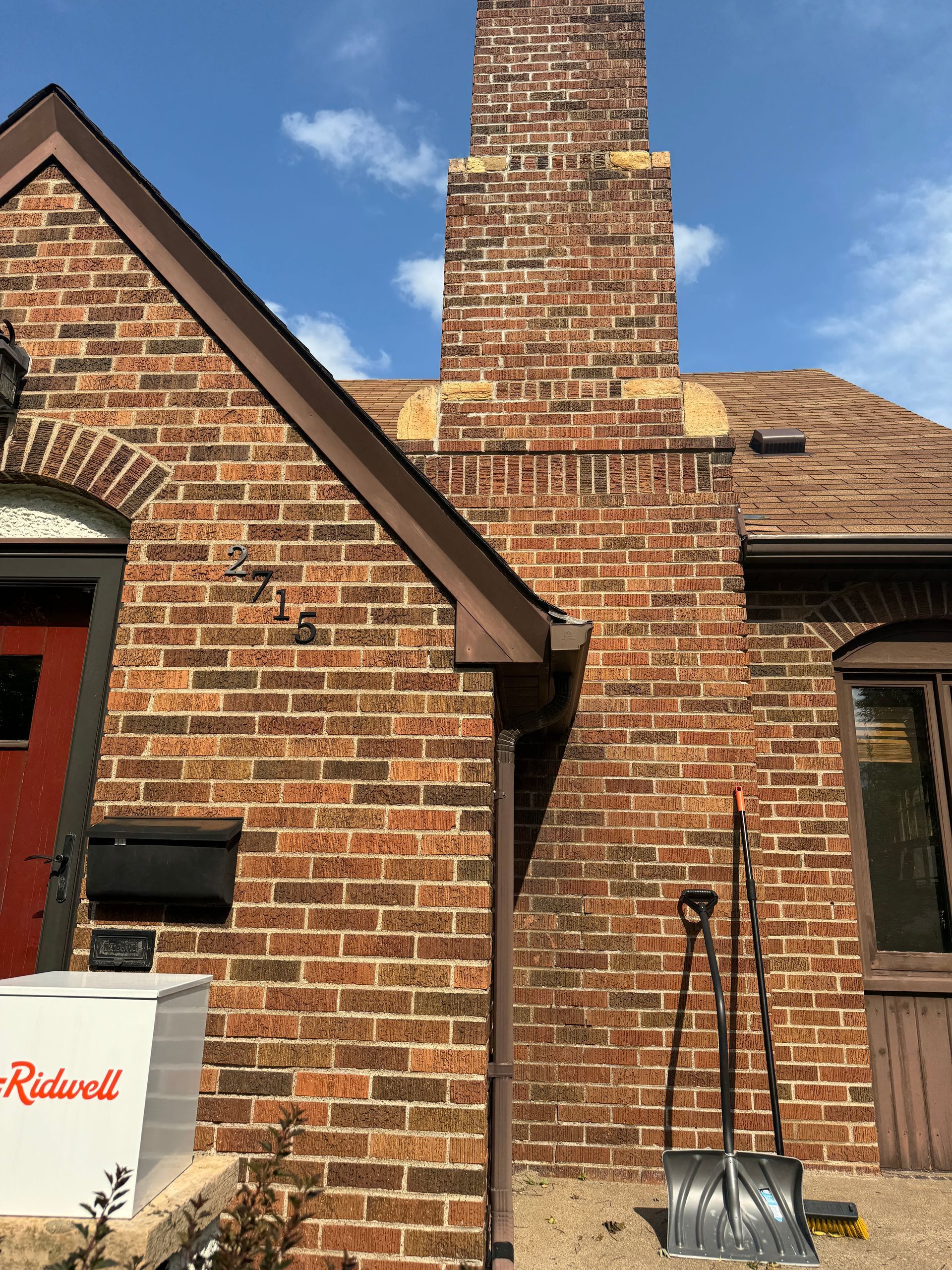
But when it comes to brick and stone, even well-intentioned projects can cause long-term damage. Masonry is durable and beautiful, yet it requires specialized knowledge to maintain its strength and character. At Capital Masonry Restoration, we often see the same few mistake s pop up during home remodels that could have been avoided with a quick consultation before work began. Here are the top issues we encounter (and how to avoid them). 1. Painting Over Brick or Stone Without Proper Prep or Materials Painted brick can look sharp and modern, but improper prep is one of the biggest ways homeowners unintentionally trap moisture. Masonry is porous — it needs to breathe. When you seal or paint it without using the right breathable materials, water vapor gets trapped inside, leading to flaking paint, spalling brick, and efflorescence (that white, powdery residue). If you want a clean, uniform look, it’s critical to use mineral-based masonry paint or limewash designed for brick and stone, not standard house paint. Always start with a clean, dry surface and consider consulting a professional before coating historic brick. 2. Using the Wrong Mortar Mix Mortar is more than “glue” — it’s the cushion that allows masonry to expand and contract with temperature and moisture changes. Using the wrong mix can cause bricks to crack or crumble. Modern cement-heavy mortars are harder than traditional lime-based versions used in older homes around St. Paul and Minneapolis. When you patch historic masonry with a newer mix, the mortar becomes less flexible than the original brick — causing the bricks themselves to deteriorate first. Type N mortar is a softer mortar used for tuckpointing on most homes or buildings, as opposed to Type S mortar which is harder and used typically for block and structural applications. A professional mason can test and match the composition of existing mortar, ensuring that repairs preserve the structure instead of damaging it. 3. Covering Masonry That Needs to Breathe Another common renovation mistake is covering masonry with impermeable materials such as dense stucco, siding, or faux stone panels. These block the brick’s ability to wick out moisture. Once sealed in, trapped moisture seeks the path of least resistance — often through joints or the interior of the home. The result? Efflorescence, mold, and internal wall damage. When done correctly, breathable coatings and compatible mortar allow your masonry to naturally manage moisture while maintaining energy efficiency and durability. 4. Ignoring Chimneys and Foundations During Remodels During a renovation, most of the attention goes to visible areas — kitchens, exteriors, patios — but chimneys and foundation walls are just as crucial. These vertical structures experience the most exposure to water and temperature swings. Cracked mortar, missing chimney caps, or deteriorating parging can allow moisture inside and compromise the stability of the entire wall. Inspecting and repairing these areas during a remodel saves costly work later — and protects your new finishes from water damage. 5. Skipping a Masonry Inspection Before the Project Begins Even if your renovation doesn’t directly touch a brick wall, vibration from demolition or new construction can cause older mortar to crack. A pre-renovation masonry inspection helps spot weak points before they become problems. A quick tuckpointing touch-up or waterproofing treatment before construction can extend the life of your masonry by decades — and safeguard your new investment. Protecting Your Investment Masonry gives Minnesota homes their warmth, texture, and history. The best way to preserve that value is to bring a mason into the process early. A short consultation can prevent hidden moisture issues, color mismatches, or structural cracks that show up months after the remodel is done. If you’re planning a renovation in the Twin Cities, contact Capital Masonry Restoration for a quick inspection before work begins — your future self (and your brick) will thank you.
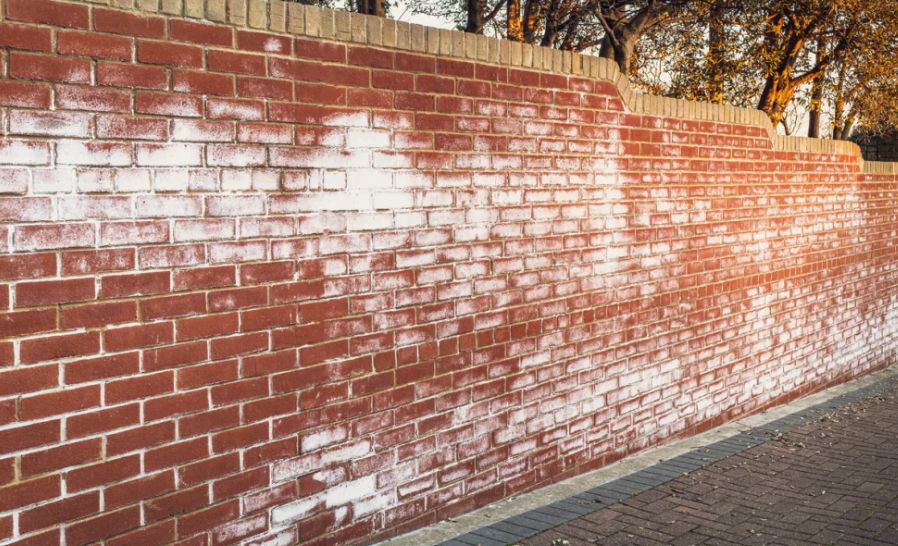
a thin, chalky white film on your brick, stone, or block. Many homeowners assume it’s mold or paint residue, but it’s actually something called efflorescence — and it’s one of the most common masonry issues in Minnesota. The good news? It’s usually harmless and easy to clean. But it can also point to hidden moisture problems worth catching early. What Is Efflorescence? Efflorescence is a deposit of salts left behind when water moves through masonry. As water travels through brick, mortar, or concrete, it dissolves natural salts within the materials. When the water evaporates at the surface, those salts crystallize — leaving the white, powdery residue we see. It’s most noticeable on darker brick and after periods of rain, snowmelt, or humidity changes. Why It Happens Efflorescence needs three things to occur: Water-soluble salts in the brick or mortar. Moisture to dissolve and transport those salts. Evaporation at the surface, which leaves the salt behind. Minnesota’s climate provides all three in abundance — porous materials, fluctuating humidity, and long wet seasons. Efflorescence often appears on north-facing walls, chimneys, or shaded areas that stay damp longer. Is It Harmful? Usually not. Efflorescence is mainly a cosmetic issue — it can be brushed or washed away with water once the wall is dry. However, if the residue keeps coming back, it could indicate that moisture is continuously moving through your masonry. Persistent efflorescence suggests leaks, poor drainage, or missing flashing that allows water to enter the structure repeatedly. Over time, that moisture can weaken mortar and lead to structural deterioration. How to Clean and Prevent It Cleaning: Wait for dry weather so the salts don’t re-dissolve. Use a stiff brush or a mild vinegar-and-water solution for stubborn areas. Avoid pressure washing — it can drive water deeper into the brick. Prevention: Check that gutters and downspouts are directing water away from walls. Repoint any deteriorated mortar joints to block water entry. Seal brick with a breathable water repellent (not a non-permeable sealer). Inspect horizontal surfaces like chimney caps or sills for cracks. When to Call a Professional If the same white residue reappears within weeks or spreads to interior walls, you may have an active moisture problem behind the surface. A professional mason can identify the source — often something simple like missing flashing or poor drainage — and stop it for good. The Bottom Line Efflorescence may look concerning, but it’s your masonry’s way of telling you that water is moving through the wall. Catching it early helps prevent deeper moisture issues down the line. If you’ve noticed recurring white staining on your brick or stone, Capital Masonry Restoration can assess the cause and recommend lasting solutions.
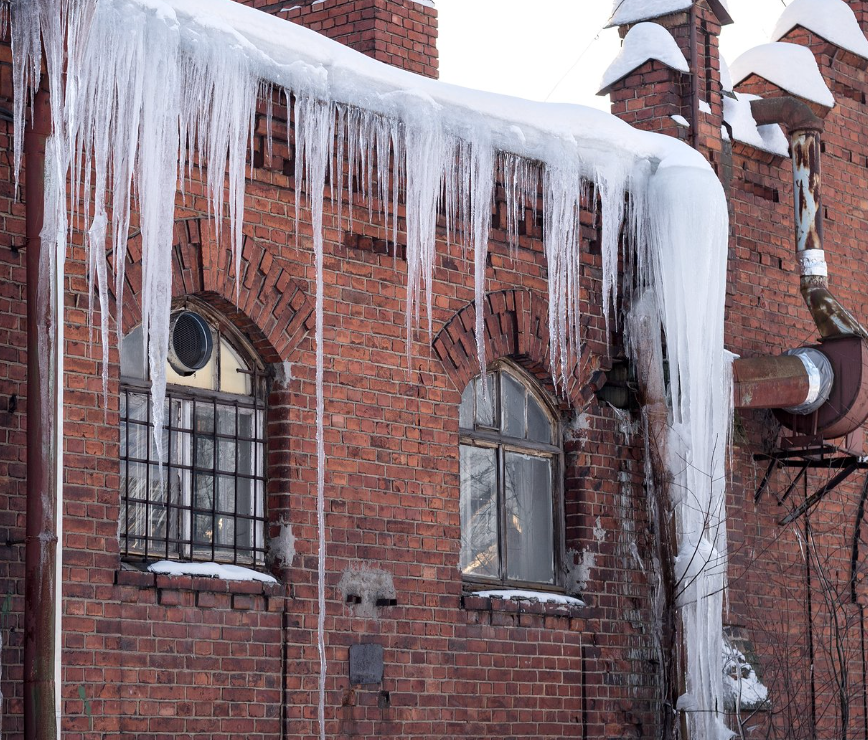
If you’ve lived in Minnesota for more than a few winters, you know how extreme the temperature swings can be. While that back-and-forth between freezing nights and mild days is tough on us, it’s even tougher on your masonry. The freeze–thaw cycle is one of the leading causes of brick and stone deterioration in our region — but many homeowners don’t realize the signs until small cracks turn into major repair needs. Here’s what’s happening behind the scenes and what to look out for. What the Freeze–Thaw Cycle Does to Masonry Brick, stone, and mortar all naturally absorb moisture. That’s fine — until the temperature drops below freezing. When the water trapped inside your masonry freezes, it expands by about 9%. That expansion pushes outward on the brick or stone, creating internal stress. As temperatures rise, the ice melts, only for new moisture to enter and repeat the cycle. Over time, this constant expansion and contraction weakens the outer layers of masonry. The result? Cracked joints, loose bricks, flaking faces, or “spalled” surfaces — the technical term for when the outer layer of brick breaks off. Common Signs of Freeze–Thaw Damage Cracks or chips along mortar joints or corners Loose bricks or stones that wobble when pressed White residue (efflorescence) indicating water movement Bulging or bowing walls, especially near chimneys Leaking or damp interior walls after snowmelt These symptoms often start small but escalate quickly after multiple winters.
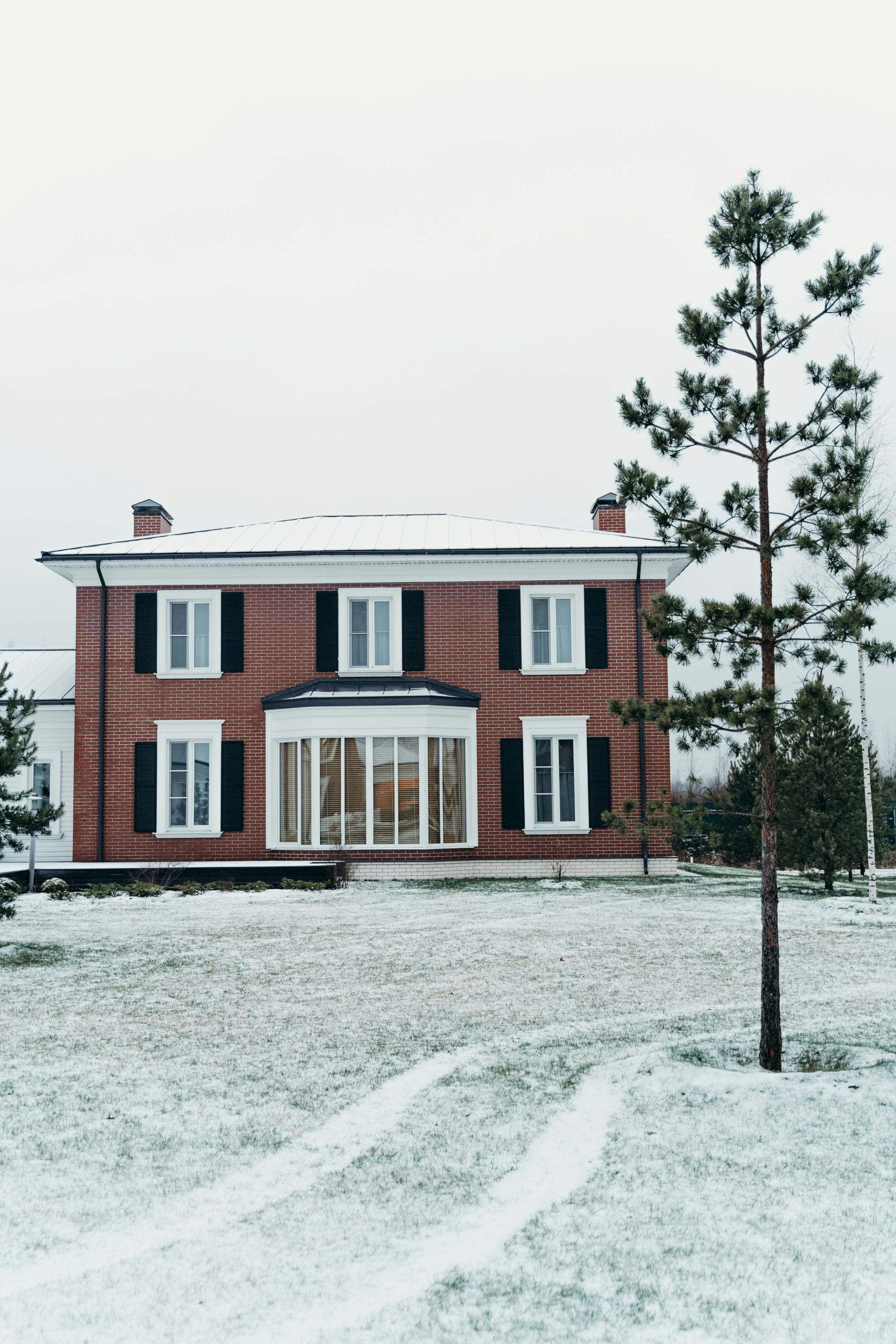
As a Twin Cities homeowner, you know that Minnesota winters can be tough. Freeze-thaw cycles, snowfall, and ice can wreak havoc on masonry—think cracked bricks, crumbling mortar, and damp foundations. Taking action now can help you avoid costly repairs later. Here's your go-to checklist to get your home winter-ready. Why Fall Is the Perfect Time for Masonry Work Cooler—but not freezing—temperatures create ideal conditions for mortar and sealants to cure, making fall a prime time for repairs. Addressing issues now ensures your home is in good shape once winter settles in. The Pre-Winter Masonry Repair Checklist Inspect for Damage. Walk around your home and check: Cracks in brick, stone, and mortar—especially near foundations and around windows and doors. Damaged or missing chimney crown, deteriorating chimney cap, flashing, or leaning masonry. Repoint Crumbling Joints & Repair Bricks Repoint deteriorating mortar joints. Replace spalling or cracked bricks to restore structural integrity and create a water-tight facade. Seal and Waterproof Masonry Apply penetrating water repellents to vertical and horizontal surfaces to mitigate water intrusion. Make sure sealing is completed before the freeze-thaw cycle begins. Chimney Maintenance Repair cracks, crown, liner, flashing, and cap. Clean creosote and check chimney integrity to ensure safe use. Foundation/Others Seal any gaps where masonry meets siding or around utility penetrations. Confirm proper grading—soil should slope away from your foundation to prevent water intrusion. Avoid having organic materials directly against masonry foundations where possible. Soil traps water and can degrade masonry over time. Using crushed stone against masonry allows the water to flow away from the structure quickly and more effectively. Clean Gutters & Downspouts Remove debris to prevent ice dams, clear blockages, and ensure proper water drainage away from masonry surfaces. Install gutters and downspouts in areas where water is running down the masonry facade to help prevent weathering to these areas. Twin Cities Fall-to-Winter Roadmap Early Fall - Conduct a full masonry and chimney inspection; identify repairs needed. Mid Fall - Perform repairs: repointing, brick replacement, waterproofing, chimney work. Late Fall - Final check: ensure gutters, grading, and flashing are winter-ready. Winter Ready - Peace of mind knowing your home's masonry is equipped to withstand freezing temps. Why This Checklist Matters Implementing these steps now not only prevents freeze-thaw damage like cracking and spalling but also extends the lifespan of your masonry and saves you from emergency repairs come spring.
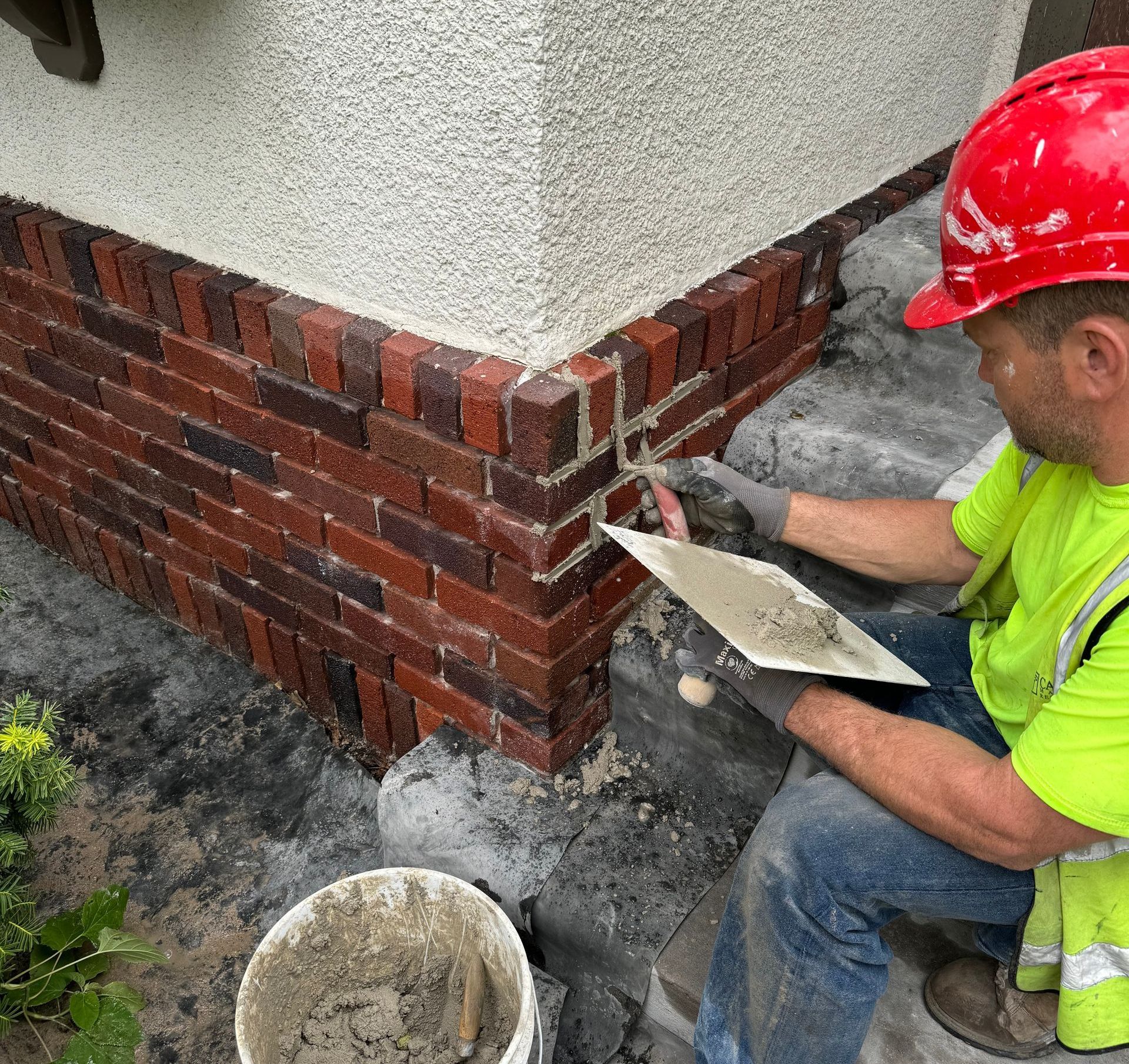
When you walk through neighborhoods in Minneapolis, St. Paul, or historic towns across Minnesota, you’ll notice beautiful brick buildings that have stood the test of time. But while brick itself is incredibly durable, the mortar joints holding those bricks together are more vulnerable to Minnesota’s harsh climate. This is where tuckpointing comes in—a process that not only restores the appearance of masonry but also protects the long-term stability of your structure. What Is Tuckpointing? Tuckpointing is the process of removing deteriorated mortar from the joints between bricks, stones, or blocks and replacing it with fresh mortar. Over time, mortar can crumble, crack, or wash away due to weather exposure, moisture, and freeze-thaw cycles. A skilled masonry contractor grinds or chisels out the damaged mortar, then carefully fills the joints with new mortar that matches the original in strength, texture, and color. The result is not only a stronger wall but also one that looks clean and refreshed. Why Tuckpointing Is Essential in Minnesota Minnesota’s climate creates unique challenges for masonry structures. The extreme temperature swings—from humid summers to frigid winters—put constant stress on mortar joints. Water seeps into tiny cracks, freezes, and expands, causing further damage year after year. If left untreated, deteriorating mortar can lead to: Water infiltration that damages interior walls, windows, and insulation. Loose or shifting bricks, compromising structural stability. Decreased energy efficiency, as gaps allow drafts and heat loss. Costly repairs, such as full wall replacements, if deterioration is ignored too long. Tuckpointing is a preventative measure that keeps these issues from escalating. By maintaining strong mortar joints, you extend the life of your building and protect your investment. Benefits Beyond Preservation Beyond the functional advantages, tuckpointing has aesthetic benefits. A well-done tuckpointing project restores the crisp, uniform lines of your masonry, instantly enhancing curb appeal. For historic homes and buildings across Minnesota, this can make a big difference in preserving original character while meeting modern durability standards. When Should You Consider Tuckpointing? Signs that your building may need tuckpointing include: Crumbling or powdery mortar Gaps between bricks and mortar Discoloration or staining from water damage Loose or cracked bricks In Minnesota, it’s a good idea to have your masonry inspected every few years, especially after harsh winters, to catch early signs of deterioration. Trust Capital Masonry Restoration At Capital Masonry Restoration, we specialize in protecting and restoring masonry throughout Minnesota. Our team understands the unique demands of the Midwest climate and uses proven techniques to ensure your brick or stone building stays strong for decades to come. We pride ourselves on our ability to match new mortar colors with existing mortar, as well as matching the different types of joint profiles historic buildings often present. Whether you own a historic home in St. Paul, a commercial property in Minneapolis, or a cabin up north, tuckpointing is one of the smartest ways to safeguard your investment. Ready to Preserve Your Building? If you’ve noticed signs of mortar deterioration or want peace of mind about the condition of your masonry, contact Capital Masonry Restoration for an inspection. Our tuckpointing services will keep your property strong, efficient, and beautiful for years to come. Call us today or request a consultation online at capmasonry.com.
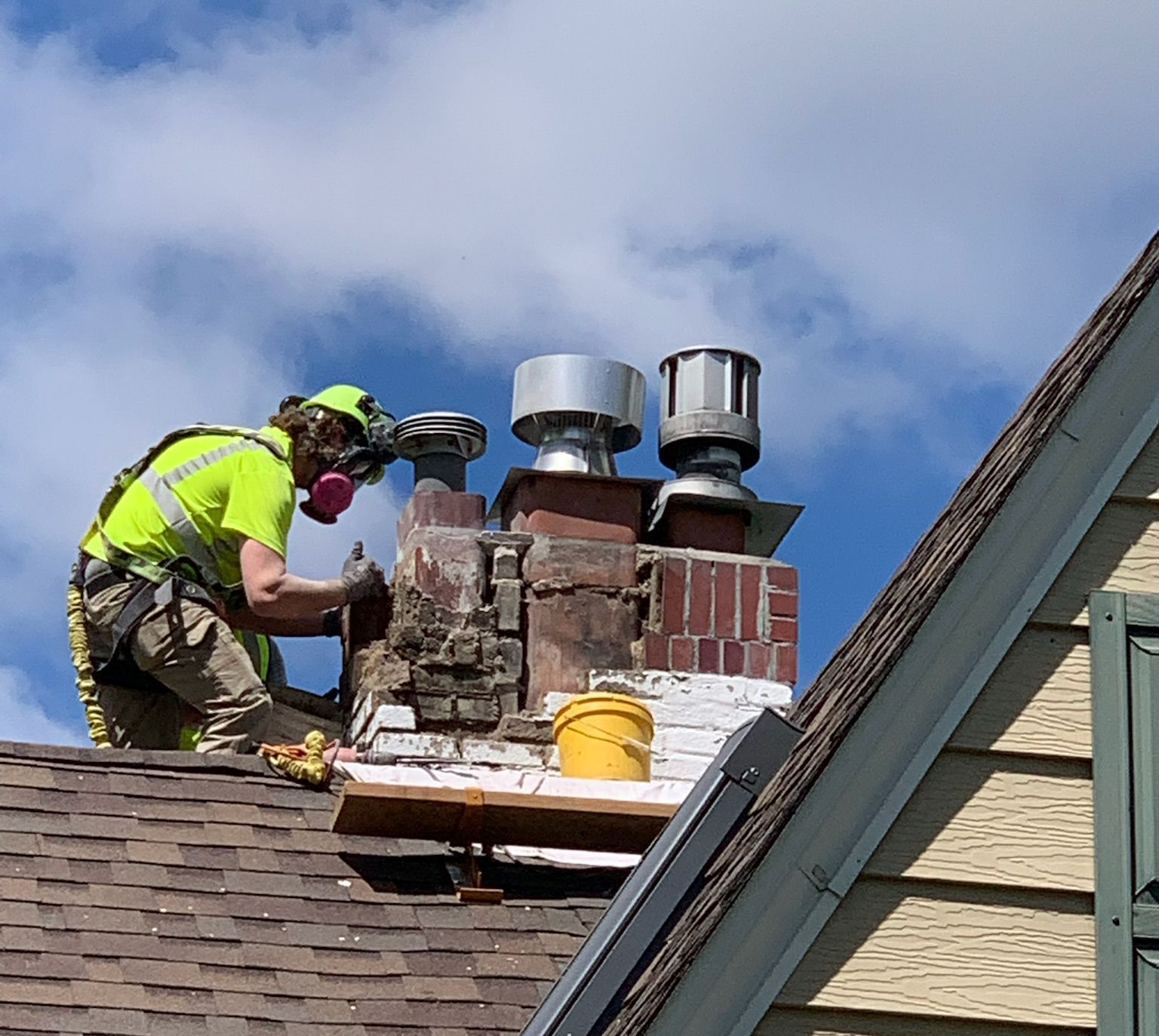
it plays a vital role in keeping your home safe and efficient. But Minnesota’s harsh weather, especially in St. Paul, can cause chimneys to wear down over time. Cracked bricks, deteriorating mortar, or a damaged crown can all lead to serious issues if left untreated. Whether you're dealing with water leaks, loose bricks, or poor ventilation, understanding when and why to invest in chimney repair or restoration is essential.
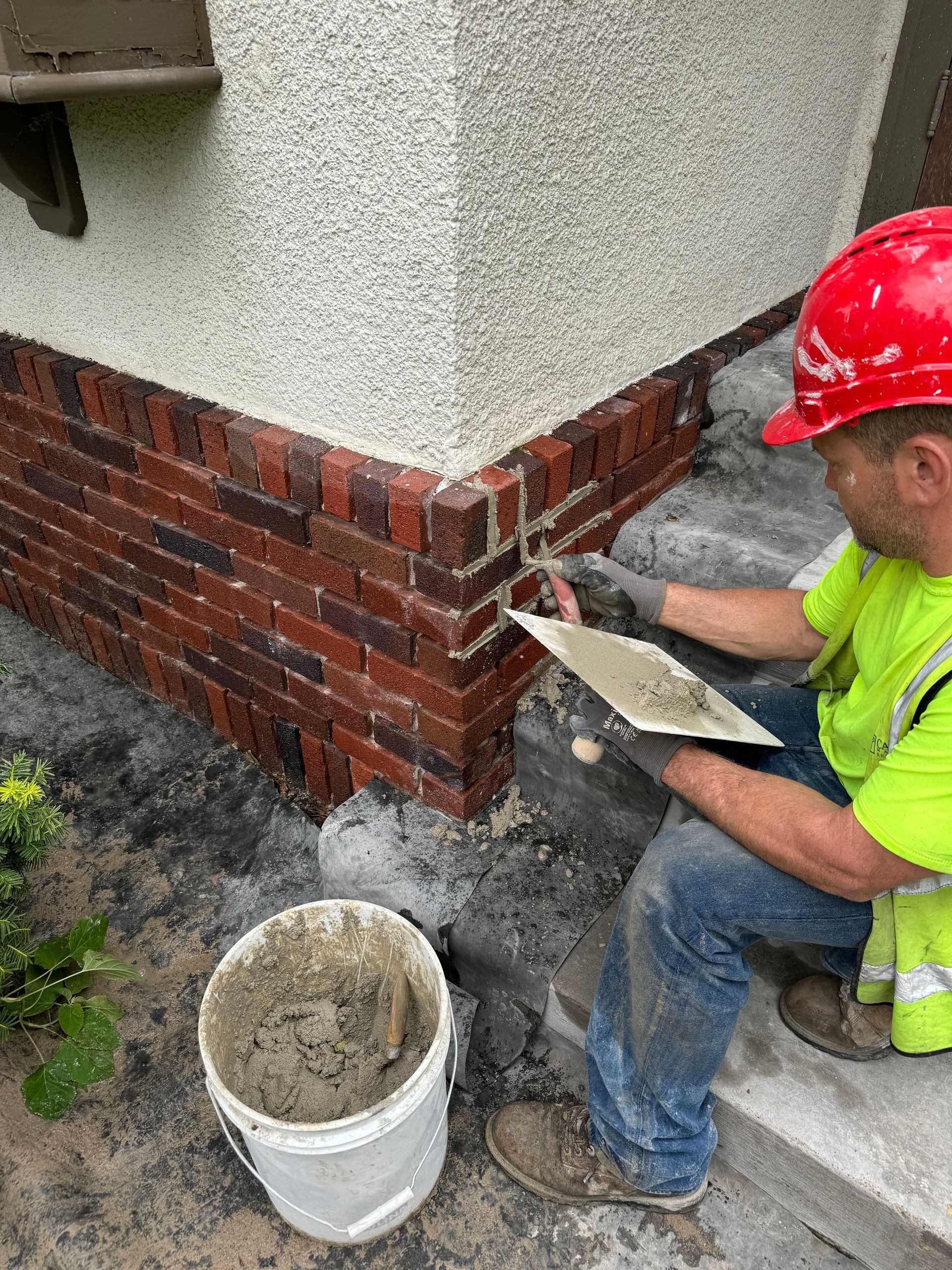
Brick is one of the most durable and beautiful building materials out there—but even the strongest masonry needs a little care to stay in top shape. If you live in St. Paul, you know that Minnesota’s freeze-thaw cycles, heavy snow, and moisture can take a toll on your brickwork over time. Whether it's your home's facade, chimney, or retaining walls, here are some expert tips to keep your brickwork looking great and standing strong for years to come.
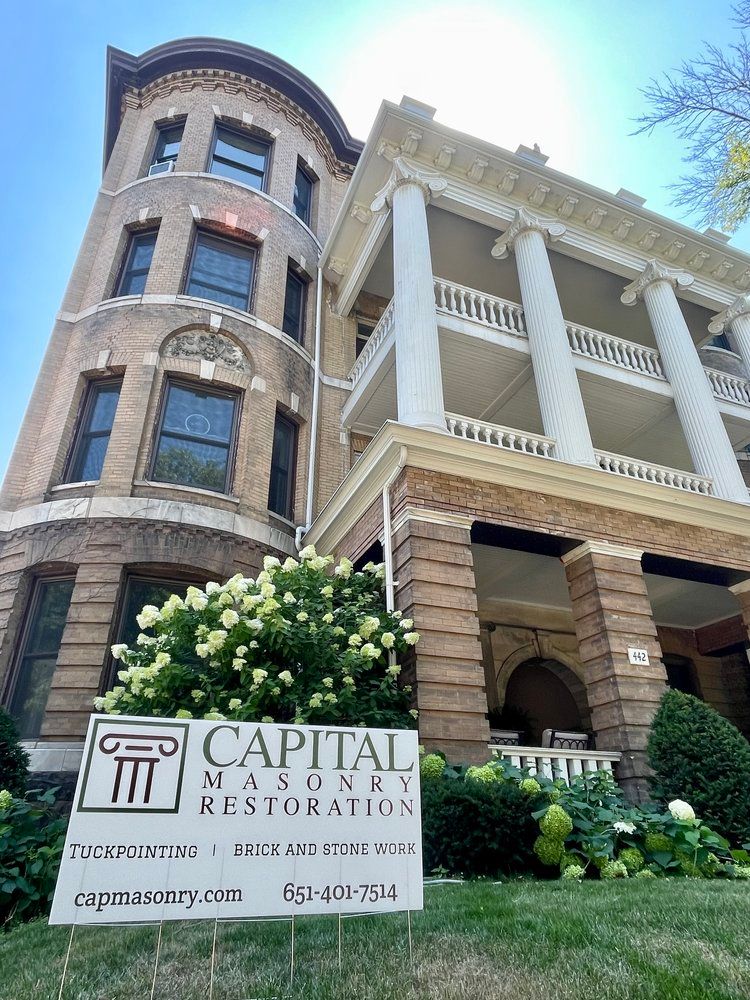
St. Paul’s historic neighborhoods are lined with character-rich buildings—many dating back a century or more. From stately brownstones on Summit Avenue to brick storefronts in Lowertown, these structures reflect the city’s architectural heritage. But as time and weather take their toll, maintaining these buildings requires more than basic patchwork. True historic masonry restoration goes beyond repairs—it’s about preserving craftsmanship, protecting property value, and respecting the past. What Makes Masonry Restoration Different? While masonry repair often involves fixing cracks or replacing damaged bricks, restoration is a more specialized process. It involves using historically accurate materials, matching original mortar color and texture, and replicating techniques from the building’s construction era. For example, many historic buildings in St. Paul were built using lime-based mortar, which is softer and more flexible than modern Portland cement. Using the wrong mortar type in repairs can actually harm the structure over time, causing bricks to crack or spall. Restoration means doing it right, with long-term integrity in mind. Common Issues in Historic Masonry St. Paul’s climate is particularly tough on masonry. The freeze-thaw cycles of winter can cause bricks and mortar to expand and contract, leading to cracks, spalling, and moisture intrusion. Common issues include: Cracked or bulging walls Efflorescence (white salt deposits from moisture) Deteriorated mortar joints Damage from previous incorrect repairs Older structures may also suffer from settling, outdated drainage systems, or structural shifts that stress the masonry in subtle ways. These problems require a trained eye and a careful touch to address properly. Why Historic Masonry Matters Beyond aesthetics, well-preserved masonry contributes to the historical fabric of the community. Whether it’s a Victorian home in Cathedral Hill or a Craftsman bungalow in Macalester-Groveland, the materials and methods used in older masonry tell the story of St. Paul’s development. Maintaining these features not only helps preserve the city’s identity—it also increases property value, supports sustainability by reducing the need for full replacements, and may be required for compliance in historic districts or for grant eligibility. Capital Masonry Restoration’s Approach to Historic Restoration Capital Masonry Restoration has extensive experience working on St. Paul’s historic structures, from residential homes to commercial landmarks. Our team specializes in: Custom mortar color matching Historic mortar joint profile matching Brick and stone replacement using salvaged or compatible materials Detail preservation, such as decorative joint profiles, coarse mortar aggregates, and period-accurate joint tooling methods We approach each project with a commitment to authenticity, longevity, and local architectural standards. You can see examples of our work on historic buildings across the city here: Capital Masonry Restoration - St. Paul Historic Projects » Choosing the Right Masonry Contractor Not all masonry contractors are equipped to handle historic restoration. When evaluating options, ask: Do they have experience with lime mortar and traditional techniques? Can they match original brick or stone accurately? Are they familiar with St. Paul’s historic district guidelines? Do they understand how improper repairs can lead to long-term damage? At Capital Masonry Restoration, we don’t cut corners. Our focus is on doing it once, and doing it right—so your building stands strong for the next generation. Conclusion Preserving St. Paul’s historic masonry is about more than bricks and mortar—it’s about honoring craftsmanship, protecting home value, and keeping the spirit of the city alive. Whether you own a turn-of-the-century residence or manage a historic commercial building, investing in proper restoration pays off in integrity and peace of mind. Interested in restoring your historic masonry the right way? Contact Capital Masonry Restoration for a consultation today.
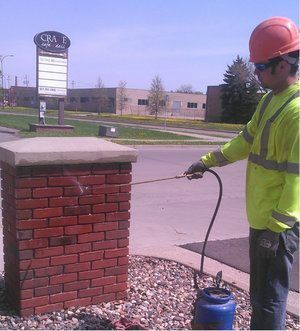
When it comes to protecting your property, water is one of the most persistent and damaging forces you’ll face. For homes and buildings constructed with brick, stone, or concrete, proper waterproofing isn’t just a bonus—it’s essential. At Capital Masonry Restoration , we specialize in helping property owners throughout the region restore and protect their masonry from the long-term effects of water damage. Here’s why masonry waterproofing matters—and how you can protect your investment for the long haul. Why Masonry is Vulnerable to Water Damage Brick and stone may seem impenetrable, but masonry is actually porous by nature. Over time, exposure to rain, snow, de-icing salts, and humidity allows water to seep into joints, cracks, and the masonry itself. Without proper waterproofing, this moisture can lead to:= Cracking and spalling: Water expands as it freezes, causing bricks or stone to crack, chip, or flake. Efflorescence: White, powdery deposits on your masonry’s surface are a clear sign that water is drawing salts to the surface as it passes through the masonry. Mold and mildew: Moisture trapped behind masonry walls can create the perfect environment for mold growth. Structural damage: If left unchecked, water can weaken the mortar joints and compromise the integrity of your foundation or walls. Benefits of Masonry Waterproofing Waterproofing your masonry does more than prevent damage—it extends the life of your structure and preserves its appearance. Key benefits include: Improved durability: Waterproofed masonry resists cracking, erosion, and freeze-thaw cycles. Lower maintenance costs: Preventative treatment helps avoid expensive repairs down the road. Enhanced property value: A well-maintained exterior boosts curb appeal and overall property value. Protection from interior damage: Stopping water before it gets inside prevents rot, leaks, and mold in interior spaces, as well as preventing damage to interior structural elements like studs and window frames. How We Protect Your Masonry At Capital Masonry Restoration, we take a tailored approach to waterproofing that starts with understanding the unique needs of your property. Our process typically includes: Thorough inspection to identify vulnerable areas, cracks, or damaged mortar. Tuckpointing or mortar repair to seal gaps and restore the strength of the joints. Application of breathable repellents that prevent water intrusion while allowing moisture to escape. Long-term maintenance plans to monitor and address any future concerns. We use professional-grade products that are compatible with historic and modern masonry alike—ensuring lasting results without compromising the structure’s appearance. Signs It’s Time to Waterproof Not sure if your property is due for waterproofing? Look for these warning signs: Damp or musty smells inside your home Visible efflorescence or water stains on exterior walls Crumbling mortar or loose bricks Mold growth in basement or crawl spaces If you notice any of these issues, it’s time to give us a call.


